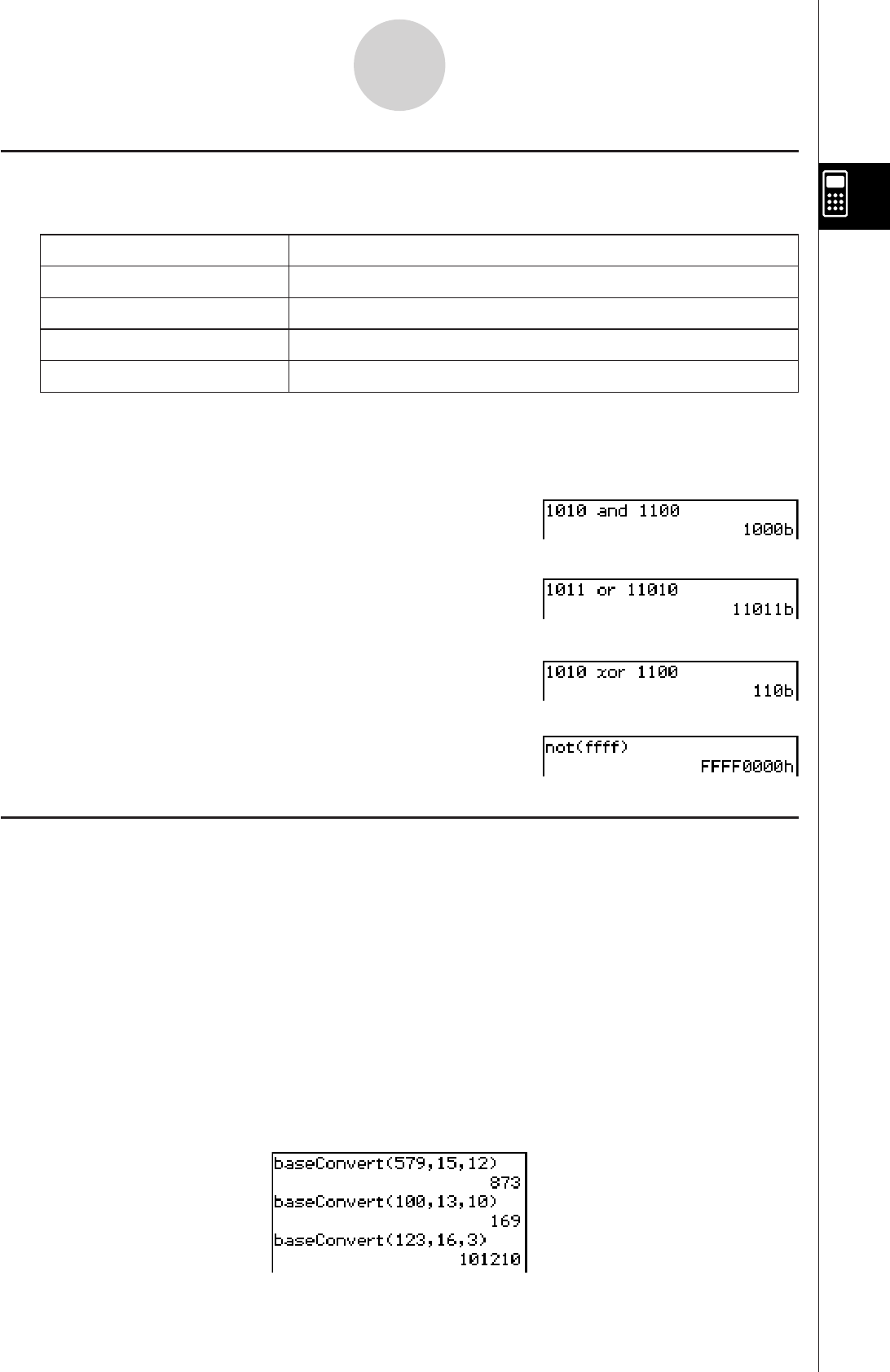
20060301
Bitwise Operations
The logical operators listed below can be used in calculations.
Operator
Description
and Returns the result of a bitwise product.
or Returns the result of a bitwise sum.
xor Returns the result of a bitwise exclusive logical sum.
not Returns the result of a complement (bitwise inversion).
Examples 1, 2, and 3 use Bin (binary) as the number system. Example 4 uses Hex
(hexadecimal).
Example 1:
1010
2
and 1100
2
= 1000
2
@?@?
N
?LB
N
@@??
U
Example 2:
1011
2
or 11010
2
= 11011
2
@?@@
N
MP
N
@@?@?
U
Example 3:
1010
2
xor 1100
2
= 110
2
@?@?
N
VMP
N
@@??
U
Example 4:
not (FFFF
16
) = FFFF0000
16
LMR
DDDD
U
Using the baseConvert Function (Number System Transform)
The baseConvert function lets you convert a number in one base (number system) to its
equivalent in another base.
Important!
• The baseConvert function works for positive integers only.
• The baseConvert function cannot be used in a line for which a particular number base is
specified. It can be used in a normal calculation line only.
Syntax:
baseConvert (Number, Current base, Expected base)
• Number must be a positive integer consisting of digits 0 to 9 and/or A to F.
• The current base and expected base can be any whole number from 2 to 16.
Examples:
2-7-5
Specifying a Number Base


















